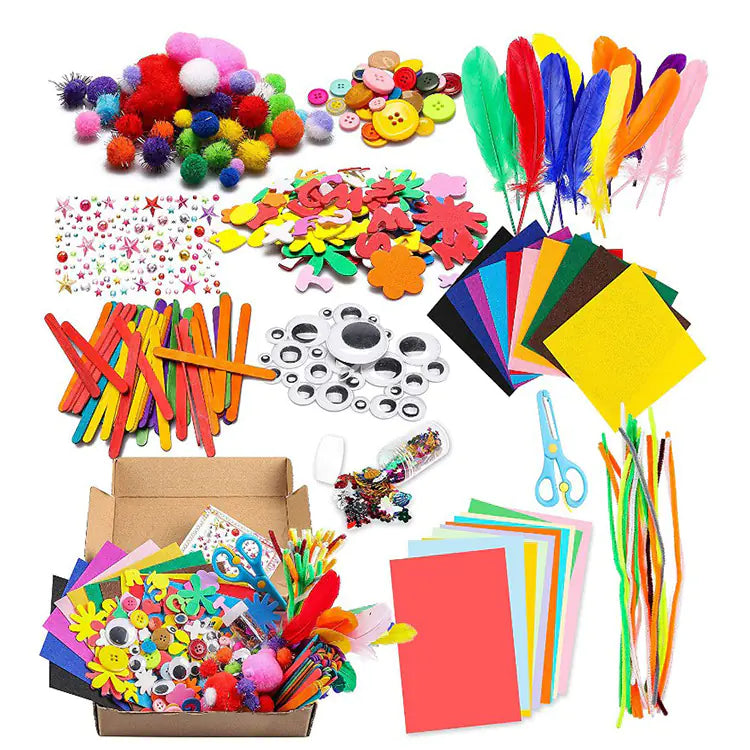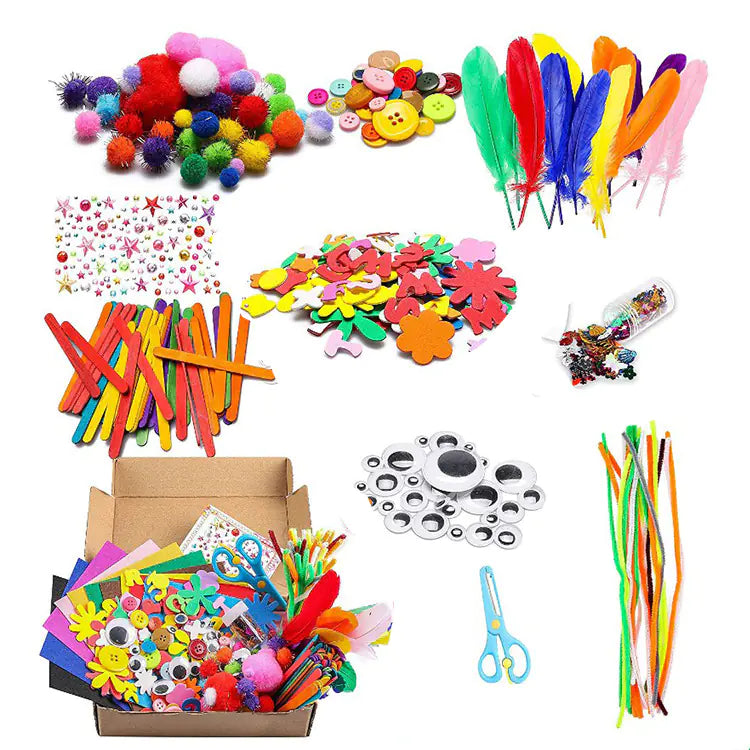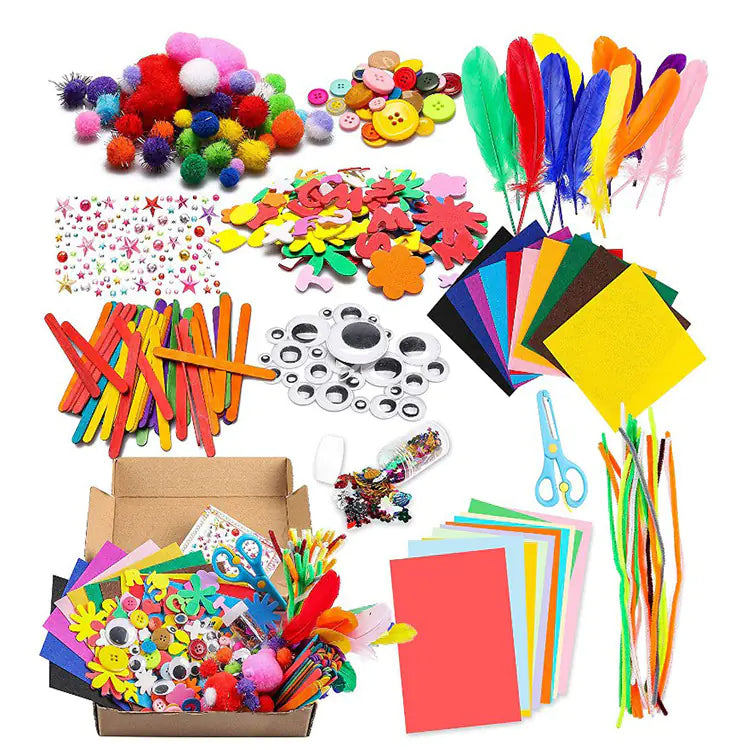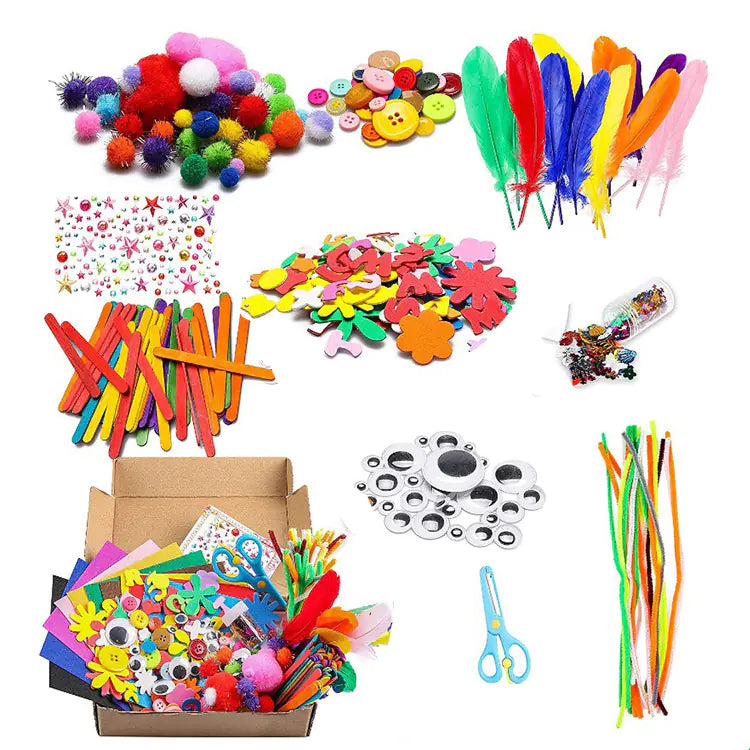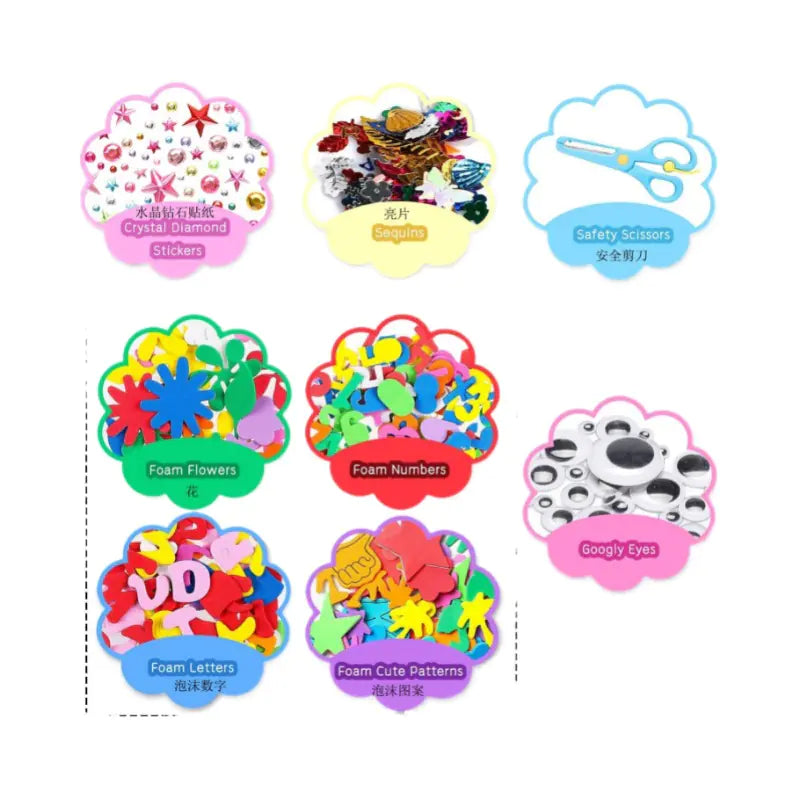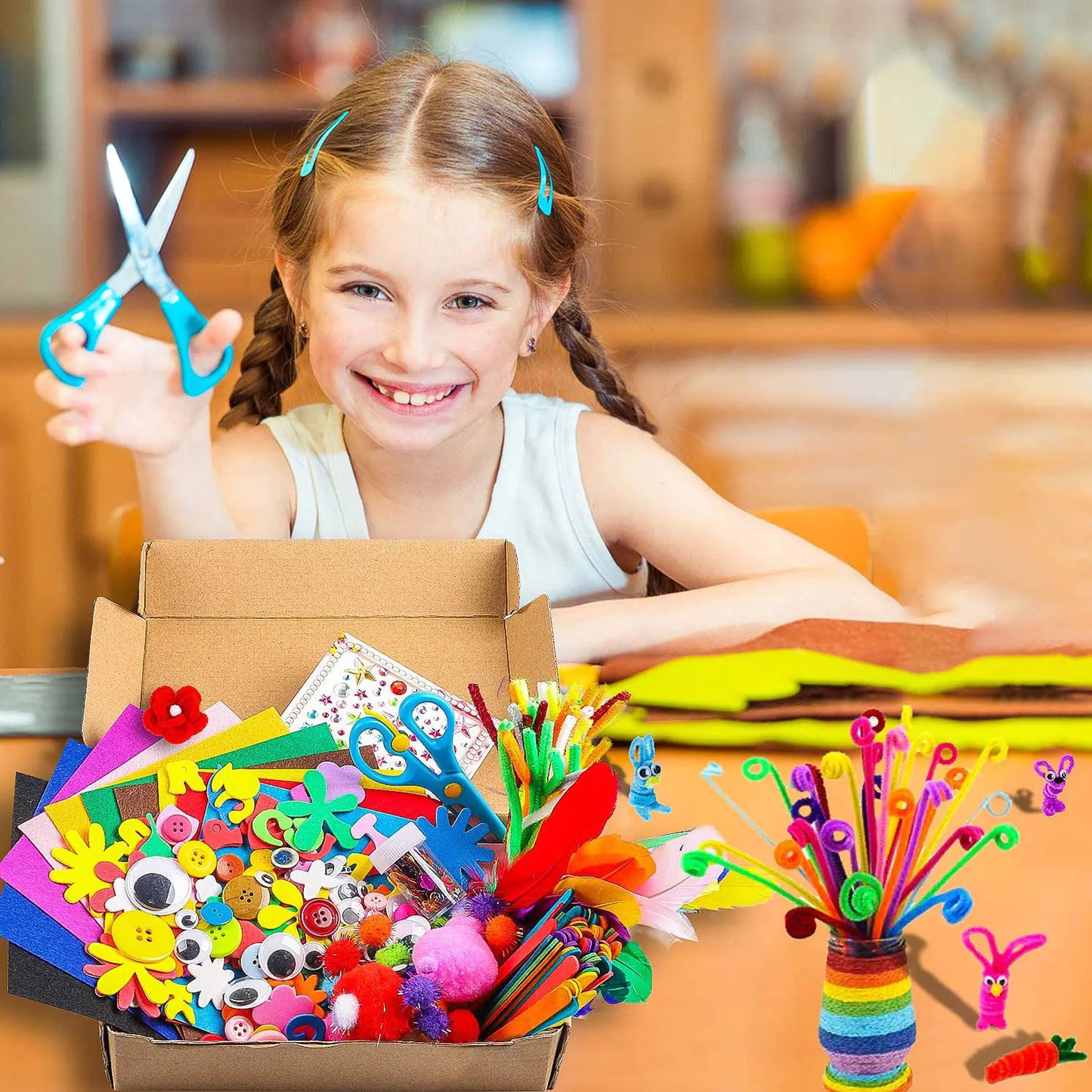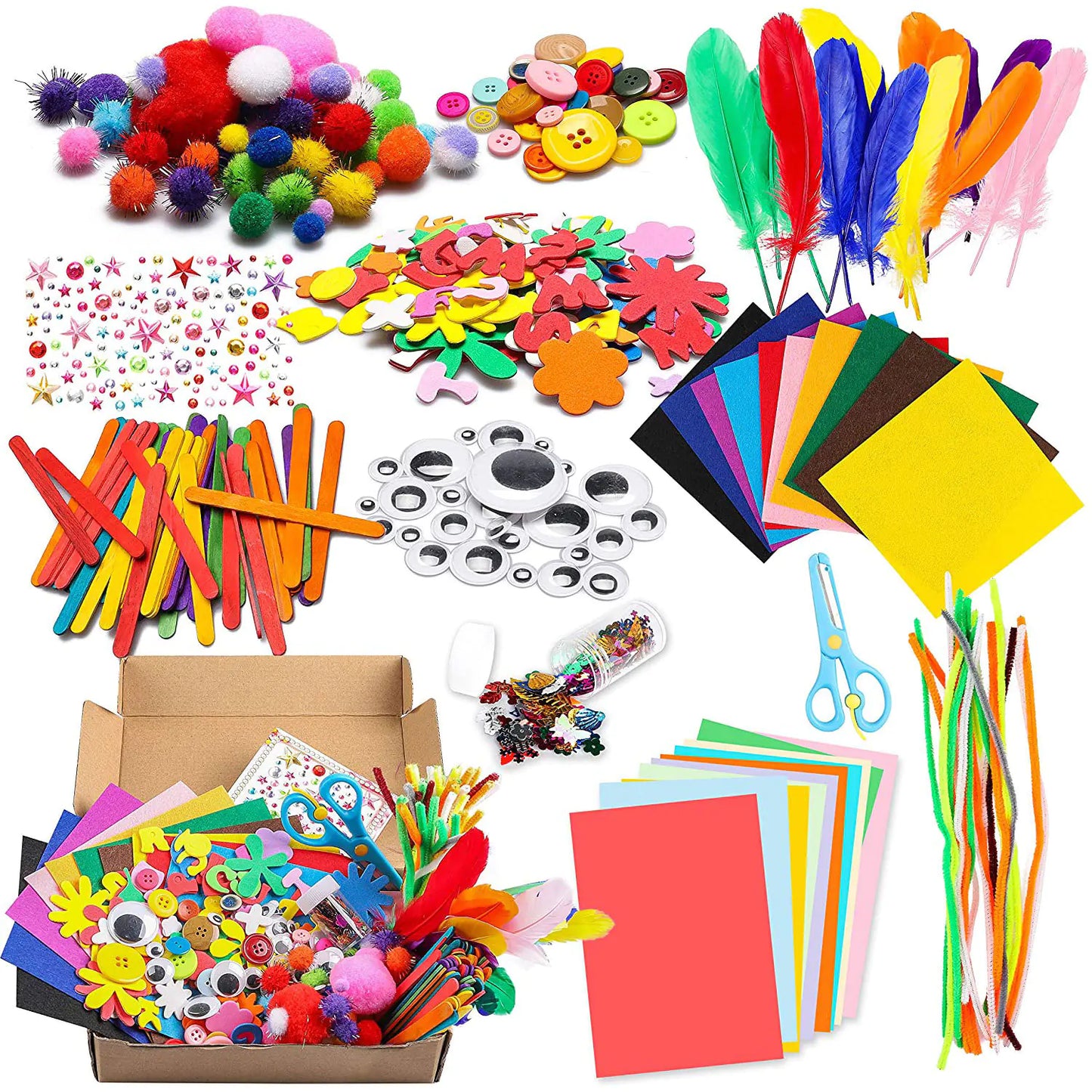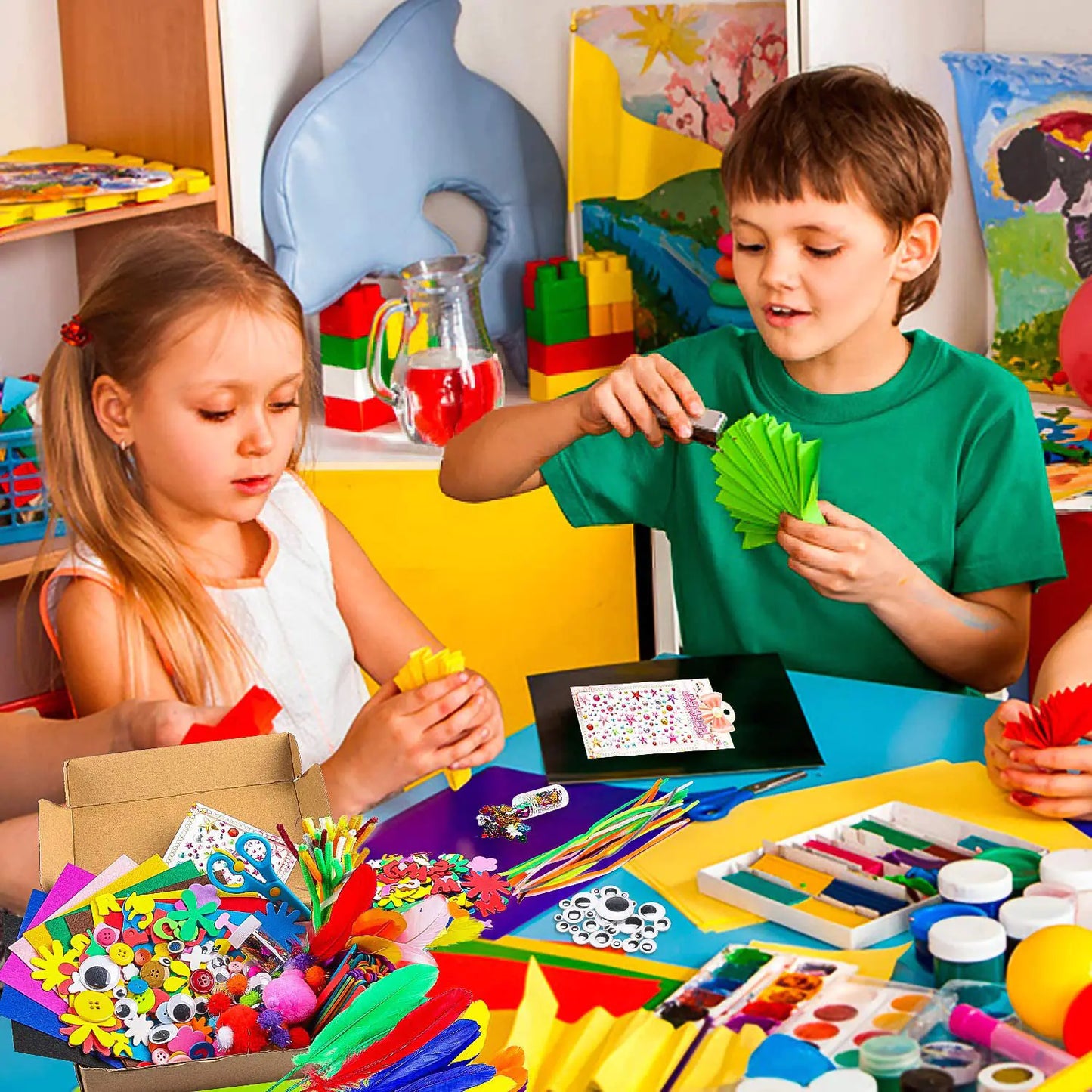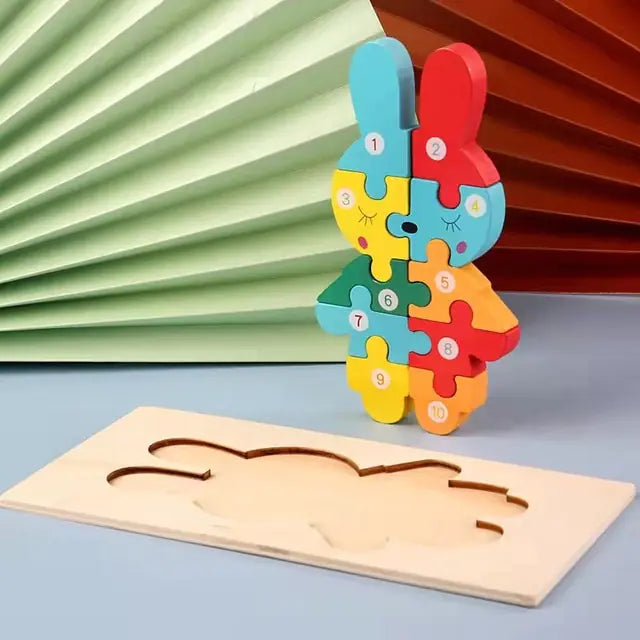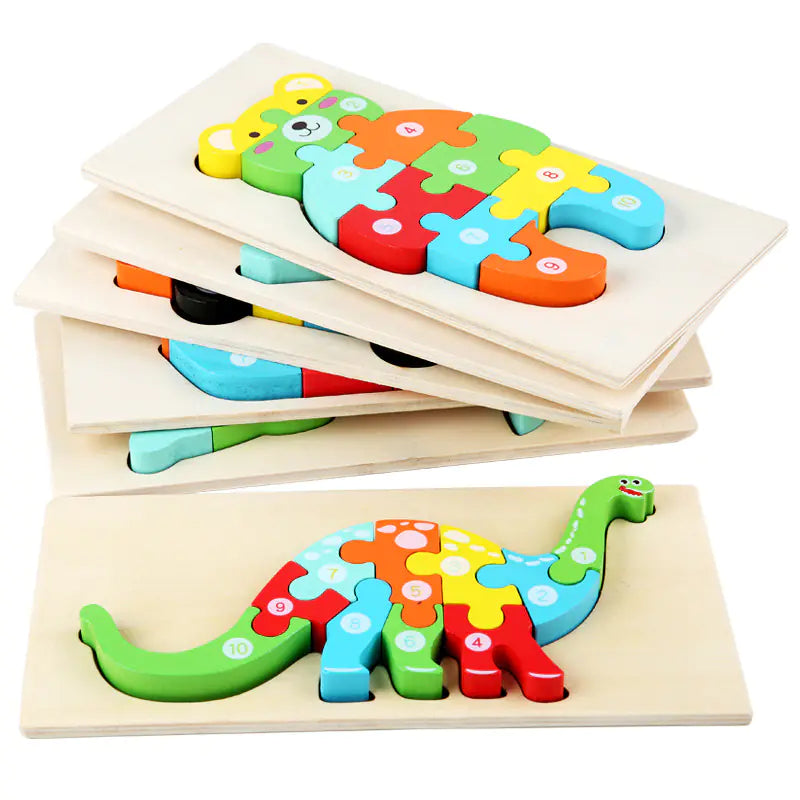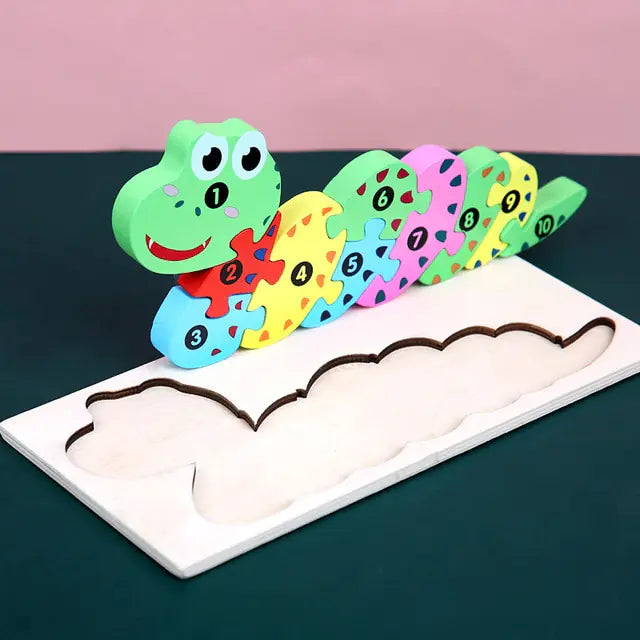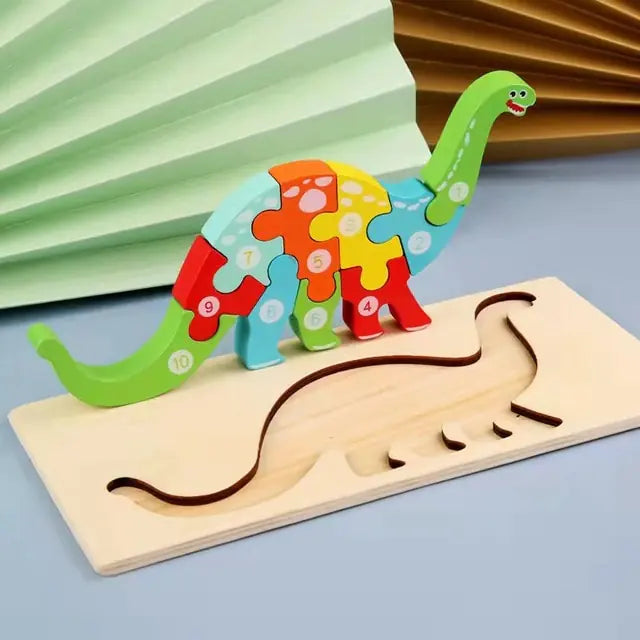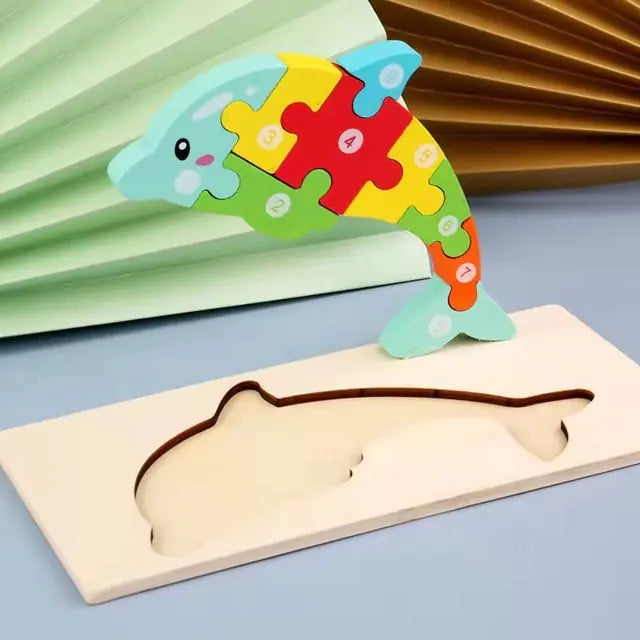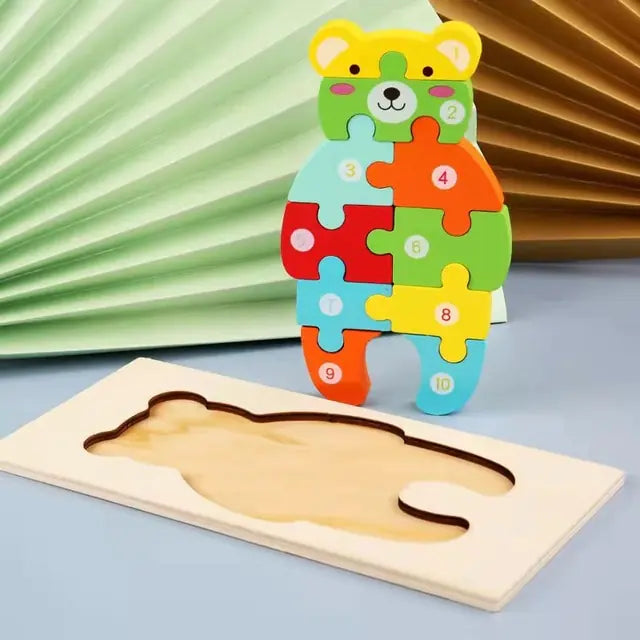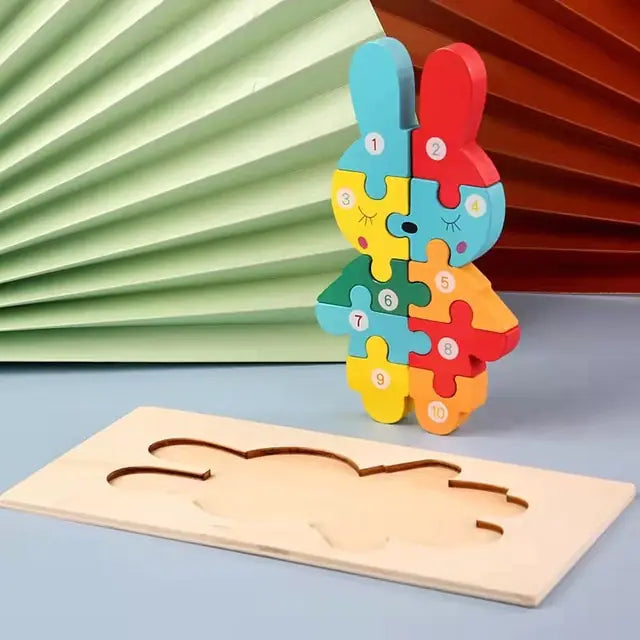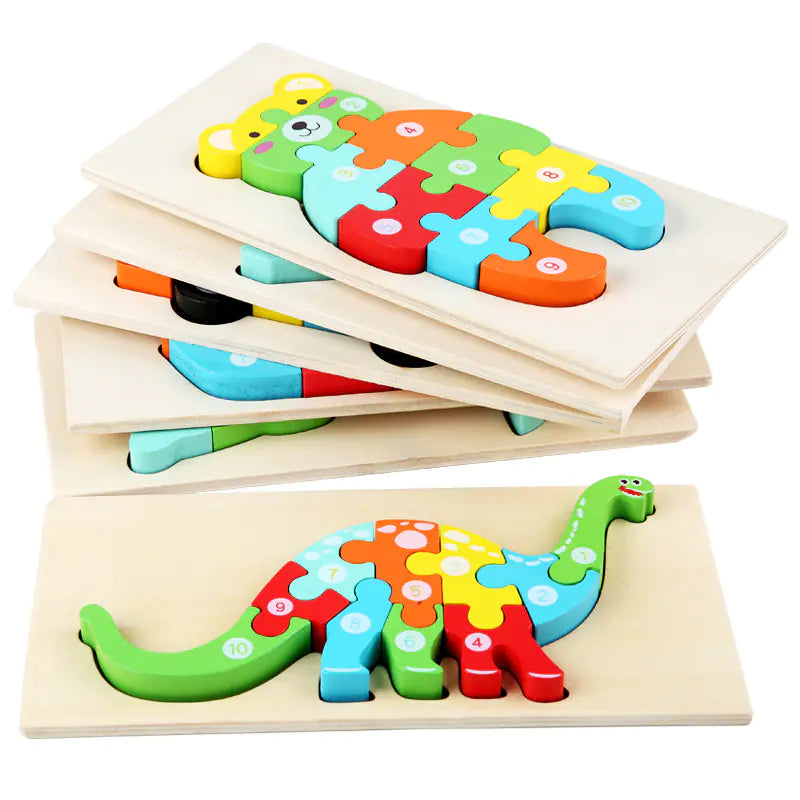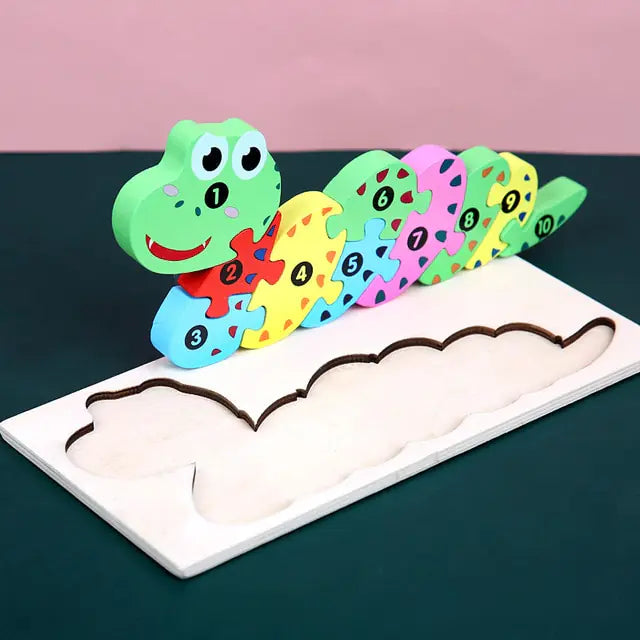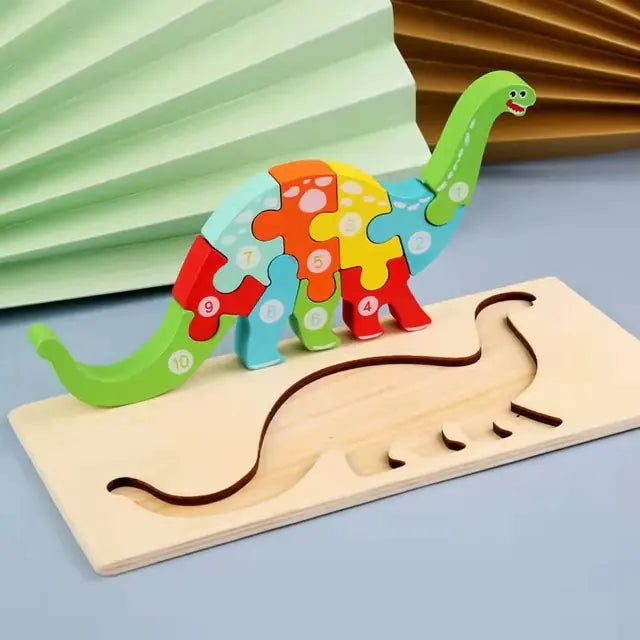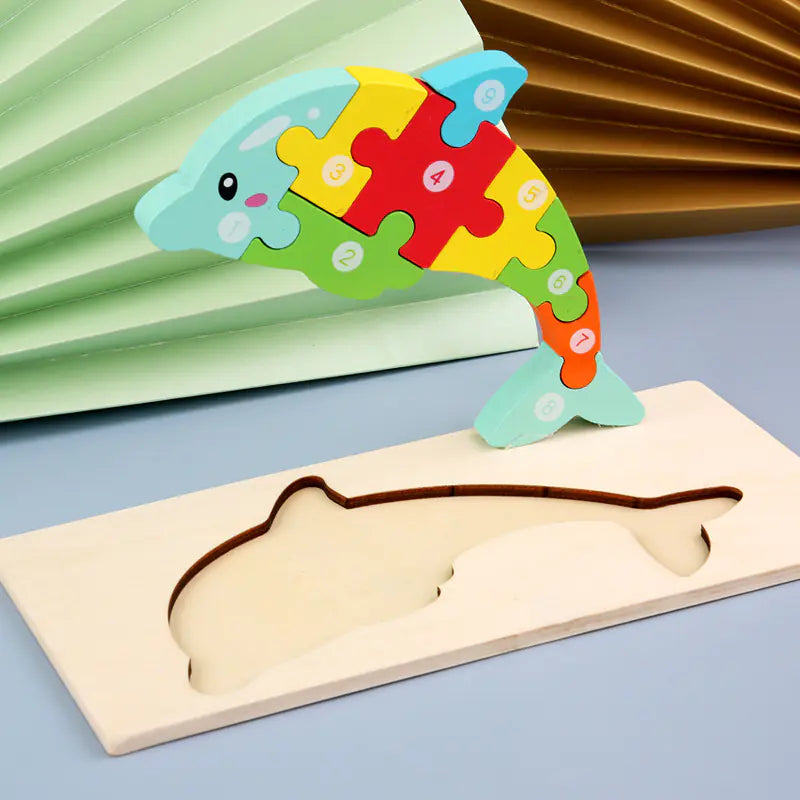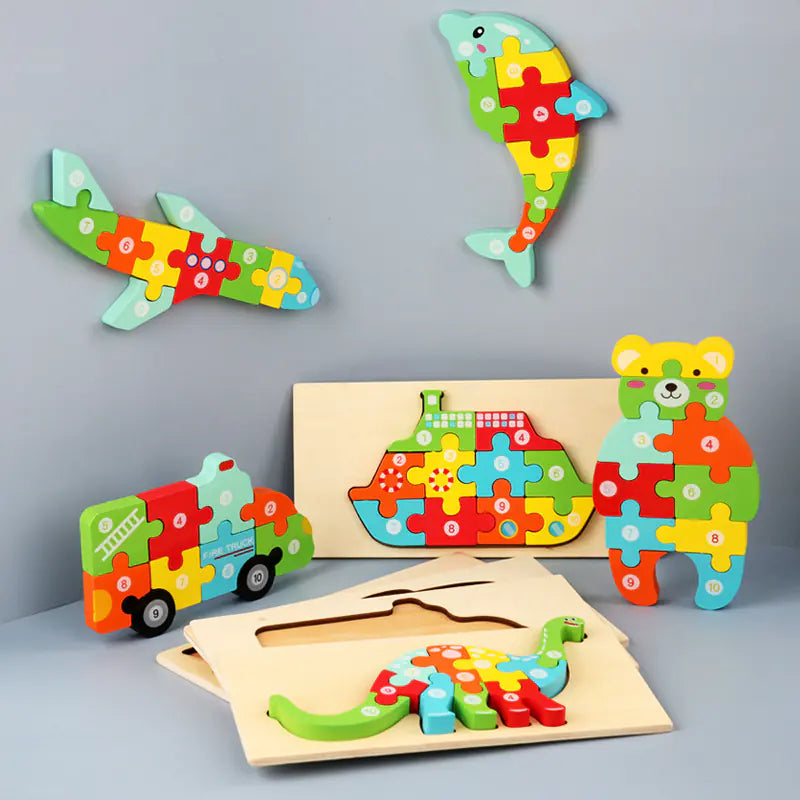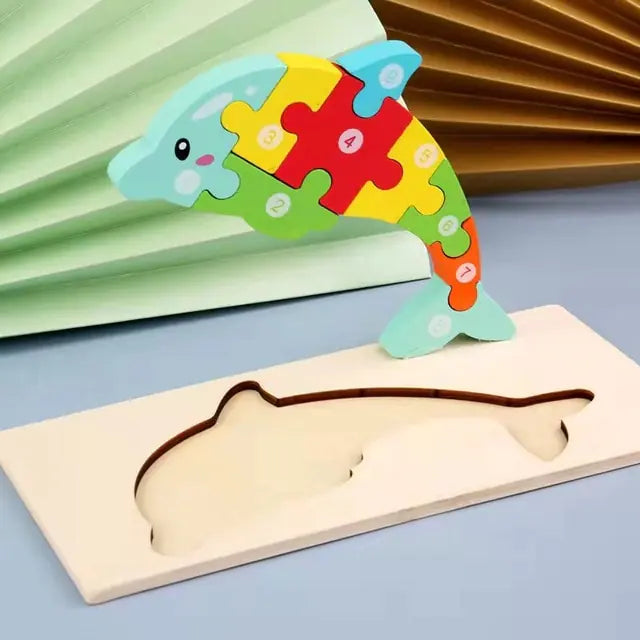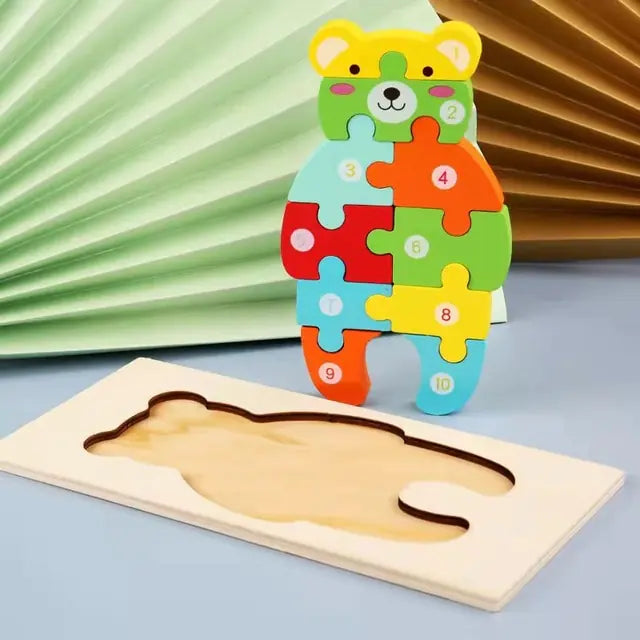Fostering a love of reading in children can be a delightful journey that begins with integrating story-based toys into their playtime. These toys not only spark imagination and creativity but also serve as a bridge to the world of books. Parents and educators can encourage children to embrace reading as a pleasurable and rewarding activity by creating a playful and literary-rich environment. The following key takeaways highlight effective strategies to promote a love of reading through story-based toys.
Unlocking Imagination with Story-Based Toys

Choosing Toys That Spark Creativity
When I hunt for toys that will light up my little one's imagination, I look for those that offer more than just a momentary distraction. Toys that encourage creativity are the gems in the playroom, transforming playtime into a workshop of wonder. I've found that the best toys require a bit of inventiveness, like building blocks and arts and crafts supplies. These aren't just fun; they're gateways to cognitive development and problem-solving skills.
Here's a quick list of my go-to creative toys:
- Building blocks for constructing dreams
- Magnetic toys that teach while they entertain
- Nature-inspired toys for outdoor exploration
-
Sensory toys that stimulate touch, sight, and sound
By choosing toys that spark creativity, we're not just giving our kids something to play with; we're giving them the tools to build their own worlds. And isn't that a magical thought? As parents, we have the power to select toys that not only entertain but also educate and inspire. Let's make every playtime a stepping stone to learning and imagination.
The Role of Storytelling in Play
I've seen firsthand how story-based toys can transform playtime into an adventure of the mind. Storytelling is a gateway to creativity, allowing kids to explore worlds beyond their immediate surroundings. By introducing toys that come with their own stories, or even better, toys that encourage kids to create their own tales, we're not just entertaining them but expanding their horizons.
Benefits of Storytelling in Play:
- Fosters imagination and creativity
- Enhances language skills and vocabulary
- Strengthens memory and sequencing abilities
- Encourages empathy and understanding of different perspectives
By weaving storytelling into play, we're nurturing a love of reading that will last a lifetime.
It's not just about the stories themselves but the discussions they spark. When my daughter plays with her story-based dolls, we talk about the characters' feelings and actions. This dialogue is crucial; it helps her connect emotionally with the story and internalize its lessons. As parents, we guide these conversations, making the connection between play and reading a natural part of their world.
Encouraging Role-Playing and Narratives
I've seen firsthand how story-based toys can transform playtime into an adventure of the imagination. By introducing toys with their backstories that can be easily integrated into tales, kids are encouraged to step into the shoes of different characters. This sparks their creativity and enhances their empathy and social skills.
- Dress-up costumes and themed playsets are perfect for this.* They allow children to act out scenarios, from everyday situations to fantastical quests. Here's a quick list of benefits I've noticed:
- Fosters imaginative play and storytelling
- Improves language skills as they narrate their adventures
- Encourages cooperation and understanding when playing with others
Remember, the key is to provide a variety of options that cater to your child's interests. Whether it's a superhero cape or a miniature kitchen, these toys serve as tools for them to craft their own stories and learn through play.
Creating a Bookish Play Environment

Designing a Reading Nook in the Playroom
I've found that creating a cozy reading nook in the playroom is like opening a portal to new worlds for my kids. It's a spot where they can dive into stories and let their imaginations run wild. Comfort is vital, so I fill the nook with plush pillows, soft blankets, and their favorite story-based toys.
It's not just about reading; this nook is a sanctuary for mindfulness and relaxation. Here's a quick list of what makes a reading nook so magical:
- A quiet retreat from the hustle and bustle
- A comfortable space that invites daily reading
- A bonding area for storytime with family
By nurturing a love for books in this little corner, I'm hoping to instill a lifelong passion for reading in my children. It's about creating lasting memories and fostering personal growth, one story at a time.
Incorporating Books into Playtime
I've found that weaving books into playtime isn't just fun—it's a game-changer for sparking a love of reading in my kids. By making books a central part of play, we create a seamless blend of storytelling and imaginative play. Here's how I do it:
- Create Themed Play Areas: When we read about pirates, we build a cardboard ship. For fairy tales, a makeshift castle. It's all about bringing the story to life.
- Interactive Storytime: We use puppets and toys that match the book's characters. As I read, my kids act out the scenes, which is a blast!
-
Book-Based Games: After reading, we play games related to the book's theme. It could be a treasure hunt for 'Where's Waldo?' or a tea party after 'Alice in Wonderland.'
Encouraging kids to interact with books beyond just reading helps them see reading as an enjoyable activity, not a chore.
Choosing the right books is crucial. I look for stories that resonate with my kids' interests and encourage them to dream big. It's about more than just reading; it's about nurturing a lifelong passion for stories and learning.
Using Themed Toys to Complement Stories
I've found that pairing storybooks with themed toys can be a game-changer for little readers. Imagine your child clutching a plush dragon while you read about fantastical beasts or building a castle with blocks as knights and princesses come to life in the tale. It's about making the story tangible, allowing kids to extend the narrative beyond the pages.
Themed toys are physical prompts that encourage children to reenact scenes or invent new adventures, reinforcing the story's elements and vocabulary. Here's a quick list of themed toy ideas to get you started:
- Plush characters from their favorite books
- Building sets that match the story's setting
- Puzzles that depict scenes from the narrative
By integrating these toys into storytime, we're not just telling stories; we're inviting our kids to live them. This immersive experience can significantly boost their engagement and comprehension, making reading a truly interactive joy.
Fostering Early Literacy Through Play

Selecting Age-Appropriate Reading Toys
When nurturing a love for reading in our little ones, selecting age-appropriate reading toys is vital. It's not just about the books but the entire experience surrounding them. Chew-friendly books with different textures are a fantastic start for our youngest readers. They can explore these books with all their senses, making reading fun and tactile.
Games and puzzles designed for their age group can also significantly develop early literacy skills. Here's a quick guide to help you choose the suitable toys for your child's age:
- Infants (0-12 months): Soft books with high-contrast colors and sensory features.
- Toddlers (1-3 years): Sturdy board books, simple puzzles, and toys introducing letters and sounds.
-
Preschoolers (3-5 years): More complex puzzles, alphabet games, and story-based figures that encourage role-play.
Remember, the goal is to make reading an interactive and enjoyable experience. By carefully selecting toys that match your child's developmental stage, you're setting the foundation for a lifelong love of books.
Interactive Toys That Teach Letters and Sounds
I've found that interactive toys are a game-changer when teaching kids about letters and sounds. Toys like magnetic letters for the fridge or foam letters for bath time make learning playful and part of daily life. It's all about making it fun; for instance, we 'fish' for letters in the bath and play 'I Spy' with sounds.
Here's a quick list of activities that have worked wonders for us:
- Fishing for foam letters in the bath
- Playing 'I Spy' with letter sounds
- Creating stories with alphabet toys
- Spotting letters on street signs and food labels
Remember, the goal isn't just to recognize letters, but to spark an interest in reading and sounds. It's about building a foundation for literacy in a way that feels like pure play. And trust me, when they start school, they'll have a head start and a love for reading that will last a lifetime.
The Benefits of Musical and Audio Books
I've seen firsthand how musicals and audiobooks can be a game-changer for kids. They're not just entertaining; they're a powerful tool for learning. With their catchy tunes, musical books make it easier for children to remember words and phrases. It's like having a song stuck in your head, but in the best way possible because it's educational! And let's not forget audiobooks. They're perfect for busy days when you can't sit down to read with your child. Just play an audiobook during car rides or while they're playing, and they're soaking up stories and language without even realizing it.
Benefits of Musical and Audio Books:
- Enhances memory through repetitive melodies
- Improves listening skills and concentration
- Introduces new vocabulary in an engaging way
- Provides a model for proper pronunciation and intonation
By incorporating musical and audio books into your child's routine, you're not only enriching their literacy skills but also their love for stories. It's a win-win situation that makes learning to read a joyful experience.
Building a Bridge from Listening to Reading

Read-Aloud Sessions with Story-Based Toys
One of the most heartwarming and effective ways to foster a love for reading in my little one is through read-aloud sessions. Bringing story-based toys into the mix has been a game-changer. It's like watching their favorite characters come to life, and the excitement in their eyes is just priceless.
- Story-based toys serve as physical props that make the narrative more engaging.
- They encourage children to interact with the story, predicting what might happen next.
- These toys also help retain attention, especially for younger kids with shorter attention spans.
By using toys that align with the stories, I'm not just reading words; I'm providing a multi-sensory experience that helps my child connect with the story on a deeper level.
It's not just about the reading; it's about the interaction. When we finish a book, we often talk about it, using the toys to reenact parts of the story. This reinforces comprehension and encourages my child to express their thoughts and feelings about the story. And let's be honest, it's a lot of fun for both of us!
Discussing Stories with Your Child
One of the most rewarding parts of parenting is sitting down with my little one after a day filled with play and toys and discussing the stories we've read together. It's not just about asking them to recall the plot but diving deeper into their thoughts and feelings about the characters and events. This is where the magic of storytelling truly comes to life.
- Ask open-ended questions like, 'What do you think the character felt?'
- Encourage them to predict what might happen next in the story.
- Discuss the moral or lesson the story might be teaching us.
By engaging in these discussions, we're not only enhancing their comprehension skills but also nurturing their empathy and critical thinking. It's a simple yet powerful way to bond and instill a love for reading that goes beyond the pages of a book.
The Importance of Repetition and Familiarity
As I've learned on my parenting journey, repetition is critical to learning. It's not just about reading the same story repeatedly; it's about reinforcing the connections between words, sounds, and meanings. When my little one clutches their favorite story-based toy and asks for the same book at bedtime, I know it's more than a habit. It's their brain craving the familiarity that helps cement their learning.
By embracing repetition, we're not just indulging our kids' requests—we're actively participating in their cognitive development.
Here's a simple list of benefits that come with repetitive reading and play:
- Strengthens memory and recall abilities
- Enhances language and vocabulary skills
- Builds confidence and comfort with reading
- Encourages deeper comprehension over time
So, next time your child wants to hear that same tale again, remember that you're laying the groundwork for a lifelong love of reading. And that's something worth repeating.
Choosing the Right Toys for Different Ages

Infants: High Contrast and Sensory Books
Infants' world is a kaleidoscope of new sights and sounds, and the right books can play a pivotal role in their development. High-contrast books are not just visually stimulating with their bold patterns and bright colors; they're also fantastic for an infant's developing eyesight. I've seen firsthand how these books captivate the little ones, drawing their gaze and encouraging visual tracking.
Sensory books are another gem in the treasure chest of infant learning. They come with various textures and materials that babies can touch, feel, and taste. It's all part of exploring their environment. Here's a quick list of features to look for in sensory books:
- Different textures (smooth, wavy, soft)
- Built-in mirrors for self-discovery
- Sounds like squeakers or crinkles
- Safe, chewable corners for teething
Remember, it's not just about reading the words on the page; it's about creating an interactive experience that stimulates all the senses. And when you place these books within easy reach, you invite spontaneous play and exploration, which is key to learning.
Accessibility is crucial. Ensure some of your baby's books are within arm's reach, nestled among their toys. This way, they can grab a book whenever curiosity strikes. It's a simple step, but it lays the foundation for a lifelong love of reading.
Toddlers: Chunky Board Books and Puzzles
As our little ones grow, their curiosity and capacity to engage with the world around them blossom. Chunky board books and puzzles are perfect for toddlers, as they're just the right size for their small hands to explore and manipulate. These tactile experiences not only entertain but also help in developing fine motor skills and problem-solving abilities.
- Board books with simple, colorful illustrations capture their attention and introduce basic concepts in a fun way.
- Puzzles with large, easy-to-handle pieces offer a rewarding challenge and teach patience and persistence.
By integrating these playful tools into our toddlers' daily routine, we create a seamless blend of learning and enjoyment. This approach lays a strong foundation for a lifelong love of reading, as children associate books with positive experiences from an early age.
Remember, the goal is to make reading a natural and enjoyable part of their world. So, let's fill their toy boxes with books and puzzles that invite them to discover, imagine, and learn.
Preschoolers: Action Figures and Dolls with Storybooks
Pairing action figures and dolls with storybooks can be a game-changer for preschoolers. These toys bring the stories to life, allowing kids to engage with the narrative actively. They develop a deeper connection with the reading material by reenacting scenes or creating new adventures. It's a fantastic way to encourage imaginative play while reinforcing the love of reading.
Why are story-based toys so effective for preschoolers?
- They bridge the gap between visual and textual storytelling.
- Kids can practice social skills by role-playing with the toys.
- The combination of play and reading enhances cognitive development.
Remember, the key is to let your child lead the play. This autonomy boosts their confidence and creativity, making reading a joy rather than a chore. It's not just about learning to read; it's about reading to learn and having fun along the way.
Making Reading a Family Affair

Shared Reading Times
I've found that establishing shared reading times is one of the most heartwarming and effective ways to foster a love for reading in my kids. It's a simple yet powerful routine that brings us together and lets us explore new worlds side by side. Reading together is more than just a learning experience; it's a bonding activity we all look forward to.
These moments are precious, Whether right before bed or during a lazy Sunday afternoon. We take turns picking out books, which is an excellent way for the kids to feel involved and for me to discover what interests them. Here's a quick list of what makes these times so unique:
- Quality time with the family
- Exposure to new vocabulary and ideas
- Instilling a habit of reading
- Creating lasting memories
Remember, it's not about the length of time we spend reading, but the quality of the moments shared. Even a short story read together can have a lasting impact on a child's love for reading.
Parental Involvement in Selecting Books and Toys
I've found that taking an active role in choosing books and toys can make a massive difference in nurturing my child's love for reading. It's not just about picking something off the shelf; it's about finding that perfect story or toy that lights up their imagination. For instance, I always look for books that align with their interests, whether dinosaurs, space, or fairy tales, and pair them with toys that bring those stories to life.
Here's a quick tip: Keep a mix of educational toys and books within easy reach. This way, kids can naturally gravitate towards reading and playing in a way that feels like their own choice. It's a subtle nudge towards learning that they'll hardly notice.
- Chew-friendly books for babies
- Puzzles and building blocks for toddlers
- Action figures and themed toys for preschoolers
By discussing the stories we read together, we bond and build a foundation for critical thinking and creativity. Remember, the goal is to make reading fun, so let's keep those story times lively and engaging!
Creating a Family Book Club
Starting a family book club has been a game-changer for us. It's a cozy way to spend time together and share our love for stories. Each week, we pick a book to read aloud, and it's impressive to see the kids' excitement about discussing their favorite parts. We've even incorporated themed toys to make the stories come alive!
Here's how we do it:
- Choose a book that's suitable for all ages in the family.
- Set a regular meeting time to discuss the book.
- Use story-based toys to reenact scenes or explore characters.
- Encourage everyone to share their thoughts and favorite moments.
By creating a nurturing environment for your child with interactive books, you maximize learning during storytime. Establishing a storytelling ritual helps bond and boost vocabulary.
Remember, the goal is to make reading fun and engaging. Sometimes, we even throw in a little competition with book-related quizzes or art projects. It's all about making memories around books and fostering a lifelong love of reading.
Leveraging Technology for Interactive Reading

Educational Apps That Complement Physical Toys
I've found that blending traditional play with modern technology can be a game-changer for our kids' learning. Educational apps that pair with physical toys offer a dynamic way to reinforce concepts and skills. For instance, an app that brings a child's building blocks to life through augmented reality can teach geometry and spatial reasoning in a way that feels like pure fun.
Here's a quick list of app categories that can enhance playtime:
- Interactive storybooks that read aloud as kids follow along with their physical books
- Puzzle and problem-solving games that correspond with physical puzzles
- Augmented reality apps that animate characters from their favorite action figures
Remember, the key is to find apps that complement, not replace, the hands-on experience. It's about adding another layer to their learning while keeping that tactile play central.
Let's not forget the balance—it's crucial to mix screen time with plenty of traditional play. But when used thoughtfully, these apps can make the journey from playing to reading not just educational but incredibly exciting.
E-books and Interactive Storytelling
In my experience, the magic of e-books and interactive storytelling is undeniable. These digital platforms bring stories to life in ways that traditional books can't, with animations, sound effects, and even voice-overs. Kids become part of the story, actively engaging with the content rather than passively listening or reading.
- E-books often include features that highlight text as the story is read aloud, helping children associate sounds with words.
- Interactive elements like puzzles and games within the story keep kids excited about progressing through the chapters.
- Personalization options allow children to see themselves in the story, which can motivate reluctant readers.
By blending reading with play, e-books can transform a child's reading session into an adventure. This not only improves literacy skills but also fosters a deeper love for reading. Remember, the goal is to make reading so much fun that it becomes a favorite pastime, not a chore.
Balancing Screen Time with Traditional Reading
In our digital age, balancing screen time and traditional reading is crucial. Encouraging our kids to love books in a world saturated with screens can be challenging, but it's not impossible. We can use technology to our advantage by selecting educational apps that complement physical toys. Still, we must ensure these digital experiences don't overshadow the tactile and imaginative joys of flipping through an actual book.
- Here are a few tips to maintain that balance:
- Set specific times for screen-based and book-based reading.
- Create a cozy reading nook that invites your child to pick up a book.
- Use screen time as a reward for time spent reading traditional books.
Remember, the goal isn't to eliminate screens entirely, but to use them in a way that enhances the reading experience rather than replacing it. It's about creating a harmonious blend of old and new that fosters a lifelong love of reading.
Encouraging a Love of Reading Beyond the Toy Box

Library Visits and Story Hours
I've found that taking my little one to the library is like opening a treasure chest of imagination. It's not just about borrowing books; it's about being part of a community that celebrates reading. We make it a fun excursion, often timing our visits to coincide with story hours. These sessions are fantastic because they bring stories to life, often with the help of puzzles and props that engage the kids even more deeply.
Remember, the goal is to make reading feel like an adventure, not a chore. Library visits can be a cornerstone of this approach, providing a wealth of resources and experiences that you simply can't replicate at home.
Here's a quick list of tips to make the most out of your library visits:
- Check the library's event calendar for special story hours and themed events.
- Encourage your child to pick out their books to borrow.
- Look for interactive exhibits or activities that might be available.
- Don't rush the visit; allow time for exploration and discovery.
Book-Themed Birthday Parties and Events
One of the most delightful ways to foster a love for reading is by throwing book-themed birthday parties and events. Imagine the joy on the kids' faces when they step into a world inspired by their favorite storybook! It's like bringing the pages to life; the benefits are just as magical.
- Encourages reading: Kids get excited about the books that inspired the theme.
- Sparks imagination: The themed decor and activities ignite creative thinking.
- Promotes social skills: Children engage with others who share similar interests.
By integrating story elements into games and decorations, we create an immersive experience that celebrates reading in a fun, social setting.
And let's not forget the educational aspect. When kids participate in activities related to the story, they're not just having fun but learning. From scavenger hunts that send them on quests similar to the characters' adventures to crafting sessions that involve creating items from the narrative, every activity is an opportunity for learning and growth.
Supporting Reading in School Settings
As a parent, I've found that supporting my child's reading journey doesn't stop at the school gates. It's crucial to stay in sync with the educational methods used by their teachers. By understanding the techniques and content used in the classroom, I can reinforce those lessons at home. For instance, if the school is using the Orton-Gillingham curriculum, I make sure to have compatible story-based toys and books that align with this approach.
Encouraging reading at home with materials that complement school learning can significantly boost your child's literacy skills.
Here's a quick checklist to keep you on track:
- Learn about the school's reading programs and methods.
- Discuss the stories and books your child is reading at school.
- Set aside regular time for reading activities that reinforce school lessons.
Remember, the goal is to create a seamless learning experience that bridges school and home, making reading a natural and enjoyable part of your child's daily life.
At Wonder Kids Toy, we believe that the joy of reading should extend well beyond the toy box. Our carefully curated selection of educational toys, including our 3D puzzles and interactive games, are designed to spark imagination and encourage a lifelong love of learning. Dive into our creative play world and watch your child's reading and cognitive skills flourish. Don't wait to ignite your child's passion for reading and discovery. Visit our Blogs section for inspiring articles, tips, and more on fostering a love of reading through play. Let's make every moment of play a stepping stone to a world of books and knowledge!
Wrapping It Up: Fostering a Love of Reading
Ultimately, it's all about making reading a joyful and engaging experience for our little ones. From snuggling up with story-based toys to exploring the worlds within the pages together, every moment we spend fostering a love of reading is an investment in our children's future. Remember, it's not just about teaching them to read but about igniting a passion for stories that will accompany them throughout life. So keep those books within easy reach, dive into adventures, and watch as your child's imagination takes flight. Happy reading!
Frequently Asked Questions
How can story-based toys encourage a love of reading?
Story-based toys spark creativity and imagination, allowing children to craft narratives and engage in role-playing that parallels the stories they read. This hands-on experience reinforces the themes and lessons from books, making reading more dynamic and enjoyable.
What are some tips for creating a bookish play environment?
Design a cozy reading nook, incorporate books into playtime by using themed toys that complement stories, and ensure easy access to a variety of books that match your child's interests and reading level.
What types of reading toys are appropriate for infants and toddlers?
High-contrast and sensory books are ideal for infants, while toddlers benefit from chunky board books and puzzles that help them develop fine motor skills and letter recognition.
How can I use story-based toys to transition my child from listening to reading?
Read aloud using story-based toys to bring the story to life, discuss the plot and characters to improve comprehension, and utilize repetition to build familiarity with words and phrases.
Are there specific story-based toys recommended for preschoolers?
Preschoolers enjoy action figures and dolls with storybooks, allowing them to reenact and expand upon the stories they hear and read.
How can I make reading a family activity?
Establish shared reading times, involve all family members in selecting books and toys, and consider starting a family book club to discuss and enjoy stories together.
What role does technology play in interactive reading?
Educational apps and e-books can complement physical toys by providing interactive storytelling experiences. To maintain a healthy variety, balance screen time with traditional reading.
How can I support my child's reading development outside the home?
Encourage visits to the library, participate in book-themed events, and support reading-related activities in their school settings to foster a broader love of reading.


